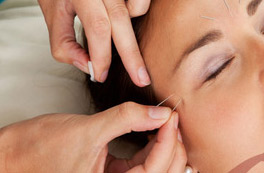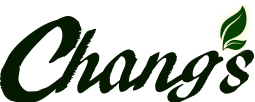Acupuncture
Acupuncture
 Acupuncture is one of the oldest and most commonly used forms of medical practice in the world, beginning 3000 to 5000 years ago. Since its introduction to the US in the 70s, its popularity has grown exponentially. In 1993, after just 20 years since its debut, FDA estimated Americans made about 12 million visits to acupuncture clinics, spending more than half a billion dollars a year.
Acupuncture is one of the oldest and most commonly used forms of medical practice in the world, beginning 3000 to 5000 years ago. Since its introduction to the US in the 70s, its popularity has grown exponentially. In 1993, after just 20 years since its debut, FDA estimated Americans made about 12 million visits to acupuncture clinics, spending more than half a billion dollars a year.
Nowadays, acupuncture is considered to be a part of mainstream medicine by many, thanks to numerous scientific researches and attestation for its efficacy.
As a matter of fact, acupuncture is the most referred specialty among complementary and alternative medical fields by medical doctors. According to one survey, more than half of the physicians (59%) believed that acupuncture can be effective, compared to 48% for chiropractic, 16% for homeopathy, and a mere 10% for aromatherapy.
Acupuncture Needles
Acupuncturists insert thin, hair-like needles into specific points on the skin. Acupuncture points are selected depending on what the practitioner is trying to achieve. Points along meridians are used to restore energy balance or to affect diseased organs. Points on specific nerve pathways are used to stimulate the involved nerves, or points on certain muscle groups are used to elicit an anti-inflammatory response in the inflamed tissues or to dissolve scar tissues.
Acupuncture needles were classified as “medical devices” by the FDA in 1997. In the same year, the National Institute of Health endorsed acupuncture for the treatment of a variety of conditions such as post-operative pain, tennis elbow, carpal tunnel syndrome, and various other conditions
The World Health Organization, the public health division of the United Nations, recognized almost 50 conditions treatable with acupuncture which include neuro-musculoskeletal conditions, emotional and psychological disorders, gastrointestinal disorders, circulatory disorders, respiratory disorders, and addiction to drugs and alcohol.
Many physiological effects were observed when you take acupuncture, including:
- Acupuncture triggers the nervous system to release neurotransmitters, such as dopamine, that transmit nerve impulses to the brain.
- Acupuncture stimulates the endocrine system to release endorphin, a natural painkiller.
- Acupuncture reduces the level of cortisol to reduce inflammation.
- Acupuncture affects the electrical currents of the body.
- Acupuncture influences circulation.
- Acupuncture acts on the autonomic nervous system.
Theory of Acupuncture and Oriental Medicine
The traditional theory of Chinese medicine is based on yin-yang and five element theory.
There are more than 2000 acupuncture points in the human body, and 361 of those are designated as “standard points” and lie on 12 main and 8 extra meridians. Meridians conduct life energy or qi that enables the communication between the outside and the internal environment and helps maintain homeostasis.
While most acupuncturists use a standard proportional method to locate the points, experienced qi gong practitioners can actually feel the qi and can find more accurate point locations, which vary slightly from person to person.
Who Performs Acupuncture?
To practice acupuncture, you need a license issued by the state. There are three groups of professionals who perform acupuncture legally. Practitioners of Oriental Medicine, licensed acupuncturists, and certified acupuncturists. Oriental Medicine practitioners may prescribe herbs in addition to acupuncture. To get a license, you have to take 3 to 4 years of post-graduate training which includes medical theory, anatomy, physiology, pathology, natural science, orthopedic, nutrition, manual therapy, and other related courses plus 2 years of clinical training. To get certified in herbology, you require additional 1 – 2 years of training in herbology. Certified acupuncturists are usually medical doctors who take 150 – 400 hours of acupuncture seminars. Acupuncture is a specialty, and you don’t need a doctor’s referral to see an acupuncturist.
Adjunct Techniques
In addition to acupuncture, acupuncturists often combine other treatments such as moxibustion, cupping, guasha, or Chinese herbs to enhance the therapeutic effect. Also, he or she may use electricity on the needles called electro-acupuncture or use the laser on acupuncture points called laser acupuncture or light acupuncture. Other modalities may be added such as electric stimulation, infrared heat therapy, or laser therapy. Many acupuncturists also go through intensive manual therapy training, typically focusing on tuina and/or acupressure.
Acupuncture is safe, effective, and also usually costs much less compared to other conventional therapies. It’s one of the best methods to balance your body, physically and emotionally.
You will benefit greatly by taking the first step into the world of holistic medicine, either as complementary or alternative care to conventional medicine, or as a preventive measure. With more than a half-century of combined experience in acupuncture, qi gong practice, and herbal medicine, Mr. Chang will guide you through this exciting journey. Please call or email us if you have any questions.
